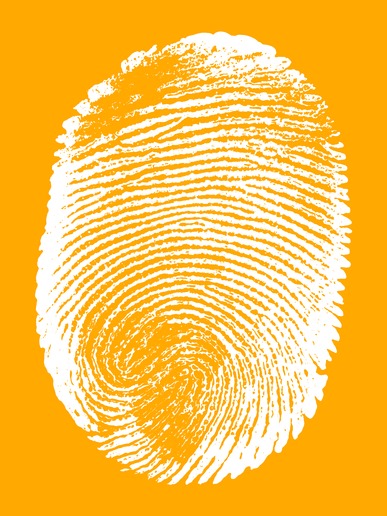 Just like people, brands come in all shapes and sizes. A brand is not a logo, colors, fancy tag line or even a fancy Super Bowl commercial. A brand is not your Facebook page, Twitter background or set of beautifully designed Pinterest boards.
Just like people, brands come in all shapes and sizes. A brand is not a logo, colors, fancy tag line or even a fancy Super Bowl commercial. A brand is not your Facebook page, Twitter background or set of beautifully designed Pinterest boards.
The truth is your brand is all of these things and more. It’s what you tweet, post, pin, +1, Instagram and offer as a call to action. It’s what you write in emails, and what you don’t. It’s whether you talk about yourself all day on Facebook or if you offer real value.
Your brand is what you say, do and think. It’s what your employees do online and offline. It’s everything from your privacy policy, social media policy to the amount of spam email you send.
It’s how you manage crisis or how you don’t. It’s how well you listen and most importantly how quickly you respond when people request help or engage with you online or offline.
The Living, Breathing, Human Brand
The human brand is much like a living, breathing organism. It’s true definition is determined by those that love, like or even dislike you. A brand is made up of humans within your organization and finally defined by those outside your organization.
You can’t create a brand with a robot or algorithm. Yes, you can use data, analytics, research and more as inputs to develop your brand, it's brand promise, core messages, vision and mission. Yet, it’s people that select the final colors and tagline. It’s humans who post the status updates. It’s humans who read them. It’s humans who click like, pin, post and share the content the humans in your organization write.
On average it takes a minimum of 6-7 brand touches for someone to remember your brand. You better make every touch count. It’s humans who decide if they like you or not, if they tell their friends good or bad things about you.
 The sooner you can acknowledge the importance of becoming a human brand and the need to truly inspire and connect with your audiences, the sooner you will see results and progress as you integrate social media into the DNA of your organization.
The sooner you can acknowledge the importance of becoming a human brand and the need to truly inspire and connect with your audiences, the sooner you will see results and progress as you integrate social media into the DNA of your organization.
Below are 13 characteristics of the human brand. I could write 100 of these because you can’t simply define a human nor a human brand in a short list of characteristics. However, here are 13 straight forward characteristics of human brands. If you are wondering what human brands do and think this is a good place to start.
This post is part of a series I am writing on the topic of brand humanization. Subscribe to the series, “Talk Human to Me” for updates, free webinars, brand worksheets, podcasts, tweet chats and more.
13 Characteristics of the Human Brand
1. Think like humans. You may be thinking that brands can’t think. Well, yes they can. Human brands have people on the inside that think like humans. They don’t think like a cash register or corporate building. They think about things that human beings do, eat, like and believe.
2. Care about humans. They care about the humans they engage with. They care if they are happy, sad, satisfied, frustrated, hungry or full. They care about their needs, wants, problems, desires and offering them real value, not just non-sense marketing tactics. It matters to them that they are cared for. They care about all the people in their ecosystem from customers to board of directors. They keep them at the front of all decisions.
3. Value relationships. Human brands value the people more than the dollar signs. They are not willing to trade a dollar for relationships gone bad. They know that investing in people is the only way and that relationships are both the cake and the icing of business and personal or professional success. You won't see the human brand buying fake Twitter follower or Facebook fans. They value real human to human interaction and authentic relationships.
4. Listen to other humans. Human brands listen more than they talk. They speak when they need to speak but always have an ear to how their audience, clients, partners and stakeholders respond. They know their Google Analytics and other website data and analytics is a gold mine. They use the data to listen and learn about their audience, not only convert the transaction to a sale. You may find them listening more than talking when it comes to social media.
5. Talk like humans. Human brands don’t talk like robots or corporate collateral. They speak in language other humans read, listen to and understand.
 6. Have a personality. What is your brand personality? Is it serious? Fun? Engaging? Inspiring? All of the above? Human brands have a personality that inspires and connects them with their audiences.
6. Have a personality. What is your brand personality? Is it serious? Fun? Engaging? Inspiring? All of the above? Human brands have a personality that inspires and connects them with their audiences.
7. Show their “human”. Right in line with the personality, human brands aren’t afraid to let their human show. They laugh, giggle, sing, dance, talk, and may even get frustrated sometimes. They often let you see the people behind the avatars as they know they are their own best ambassador.
8. Make and own their mistakes. No human being is perfect and no brand is perfect because it is made up and defined by humans. Human brands are humble. They make mistakes just like you and me and they aren’t afraid to own it..
9. Are available. Are you available when your online or offline audience wants you to be? Do you respond to questions in a timely manner? Are you even available to answer questions? Or do you hide behind a corporate web form, fill your Twitter and Facebook stream with corporate speak? Human brands make themselves available. Even if they aren’t available 24/7 they let their audience know when they are available.
10. Know themselves. They know who they are and what they offer their customers, partners, online community and friends. They know their strengths, weaknesses and sweet spots. They know how to talk, listen and what makes them shine. They don’t guess what to post or pin as they engage in social with confidence and pride.
 11. Know their audience. Just as they know themselves, they also know their audience. They know what their audience wants and how to provide it. They know how to inspire them, connect with them and help them achieve their goals. They know if they inspire, connect and help their audience achieve their goals that they will by default achieve their goals as well.
11. Know their audience. Just as they know themselves, they also know their audience. They know what their audience wants and how to provide it. They know how to inspire them, connect with them and help them achieve their goals. They know if they inspire, connect and help their audience achieve their goals that they will by default achieve their goals as well.
12. Agile. Human brands do not sit static, they evolve. Because they are always learning, listening more than talking, they are able to move with agility. They don’t have to jump on every shiny new object. They are able to jump with confidence at the right time. This offers them an extreme level of competitive differentiation. As those brands who are not in touch with their audience, who aren’t listening, and not focused on the goals and objectives of their audience have difficulty saying no to shiny objects as they’re always looking for the next best thing to magically bring them success. Human brands evolve with confidence and agility combined.
13. Invest in people. Human brands know they can never go wrong by investing in people. They invest in listening, learning, training, empowering, building teams and creating a culture that enables their brand to shine from the inside out. As Sandy Carter of IBM says, “Culture eats strategy for lunch.” Even though I am a strong believer of strategy, I agree with her. Without investing in culture and the people both internal and external brands can’t be human.
What You Say?
Is your brand human? Do you wish it was more human? What about your brand is human? What is your favorite human brand? What is it that attracts them to you? Is it the way they talk, think, act, or simply everything about them?
Talk Human to Me Series
This blog post is part of a series titled “Talk Human to Me“. It includes a deep look at brand humanization and the power of the human brand.
Subscribe to the series for updates and access to special videos, webinar training, worksheets and more. Would love to hear your input and have you participate in discussions and debates as we challenge each other to be more human from the inside out within our lives and business.
Additional Resources:
- Worksheet: Download our POST audience analysis worksheet to help you identify and prioritize your top audiences. It is based upon the Forrester POST methodology.
- Whitepaper: Download 15 Tips to Zoom Your Brand Whitepaper
- Social Brand Humanization: Authenticity vs Transparency
- Talk Human to Me: 20 Tips to Humanize Your Brand
- KitchenAid: Bad Tweets Happen to Good Brands
- Are Your Employees Your Employees 24/7?
- Social Brands Can't Be Perfect Because Human Beings Aren't Perfect
- 20 Tips to Avoid Being a Social Brand Gone Wrong
- Social Trust Factor: 10 Tips to Establish Social Business Credibility
- How to Build a Social Brand That's a Sweet Orange in a World of Bitter Apples
Leave A Comment
You must be logged in to post a comment.